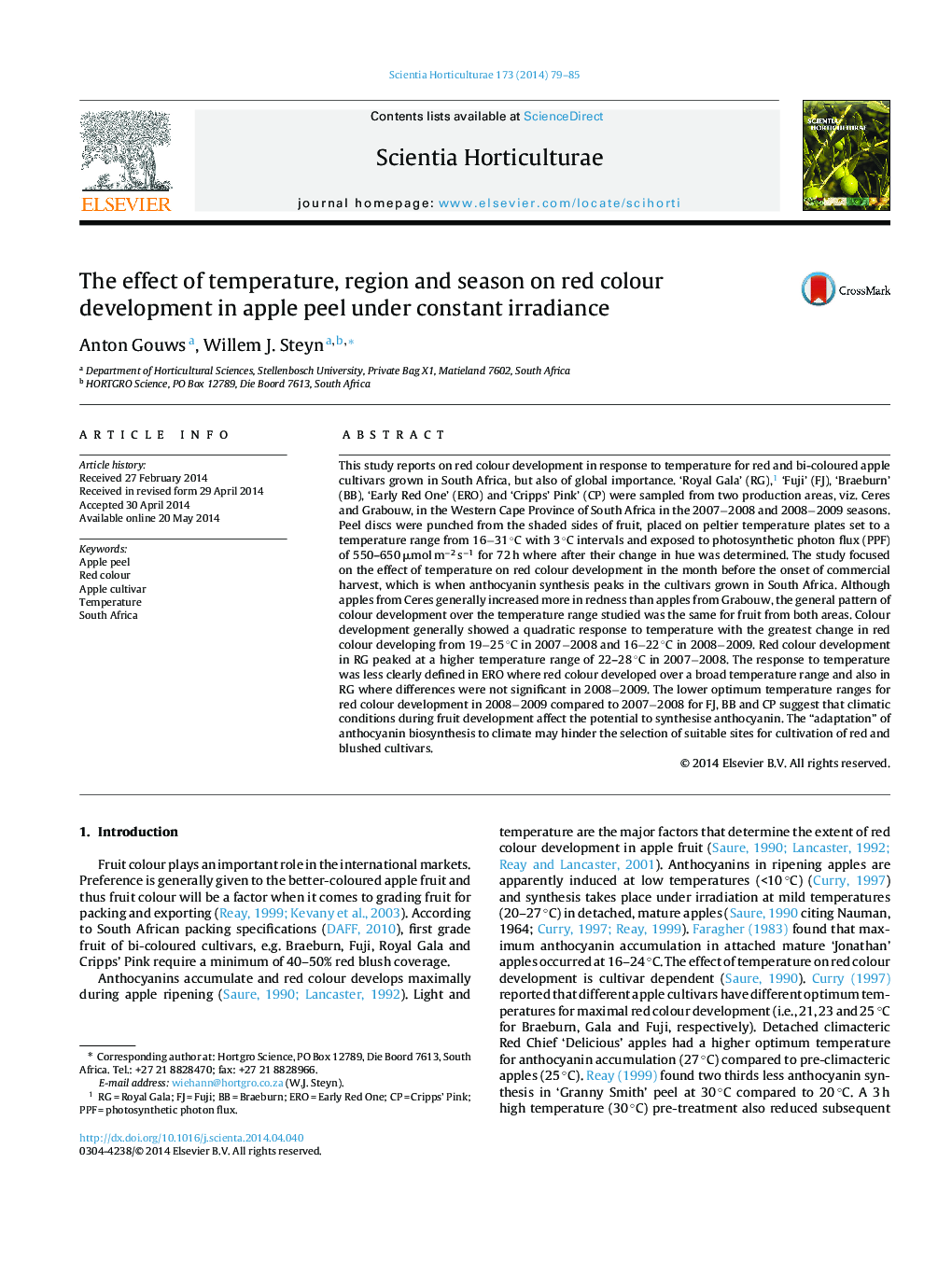| Article ID | Journal | Published Year | Pages | File Type |
|---|---|---|---|---|
| 4566799 | Scientia Horticulturae | 2014 | 7 Pages |
Abstract
This study reports on red colour development in response to temperature for red and bi-coloured apple cultivars grown in South Africa, but also of global importance. 'Royal Gala' (RG),1 'Fuji' (FJ), 'Braeburn' (BB), 'Early Red One' (ERO) and 'Cripps' Pink' (CP) were sampled from two production areas, viz. Ceres and Grabouw, in the Western Cape Province of South Africa in the 2007â2008 and 2008â2009 seasons. Peel discs were punched from the shaded sides of fruit, placed on peltier temperature plates set to a temperature range from 16â31 °C with 3 °C intervals and exposed to photosynthetic photon flux (PPF) of 550-650 μmol mâ2 sâ1 for 72 h where after their change in hue was determined. The study focused on the effect of temperature on red colour development in the month before the onset of commercial harvest, which is when anthocyanin synthesis peaks in the cultivars grown in South Africa. Although apples from Ceres generally increased more in redness than apples from Grabouw, the general pattern of colour development over the temperature range studied was the same for fruit from both areas. Colour development generally showed a quadratic response to temperature with the greatest change in red colour developing from 19â25 °C in 2007â2008 and 16â22 °C in 2008â2009. Red colour development in RG peaked at a higher temperature range of 22-28 °C in 2007â2008. The response to temperature was less clearly defined in ERO where red colour developed over a broad temperature range and also in RG where differences were not significant in 2008â2009. The lower optimum temperature ranges for red colour development in 2008â2009 compared to 2007â2008 for FJ, BB and CP suggest that climatic conditions during fruit development affect the potential to synthesise anthocyanin. The “adaptation” of anthocyanin biosynthesis to climate may hinder the selection of suitable sites for cultivation of red and blushed cultivars.
Keywords
Related Topics
Life Sciences
Agricultural and Biological Sciences
Horticulture
Authors
Anton Gouws, Willem J. Steyn,
